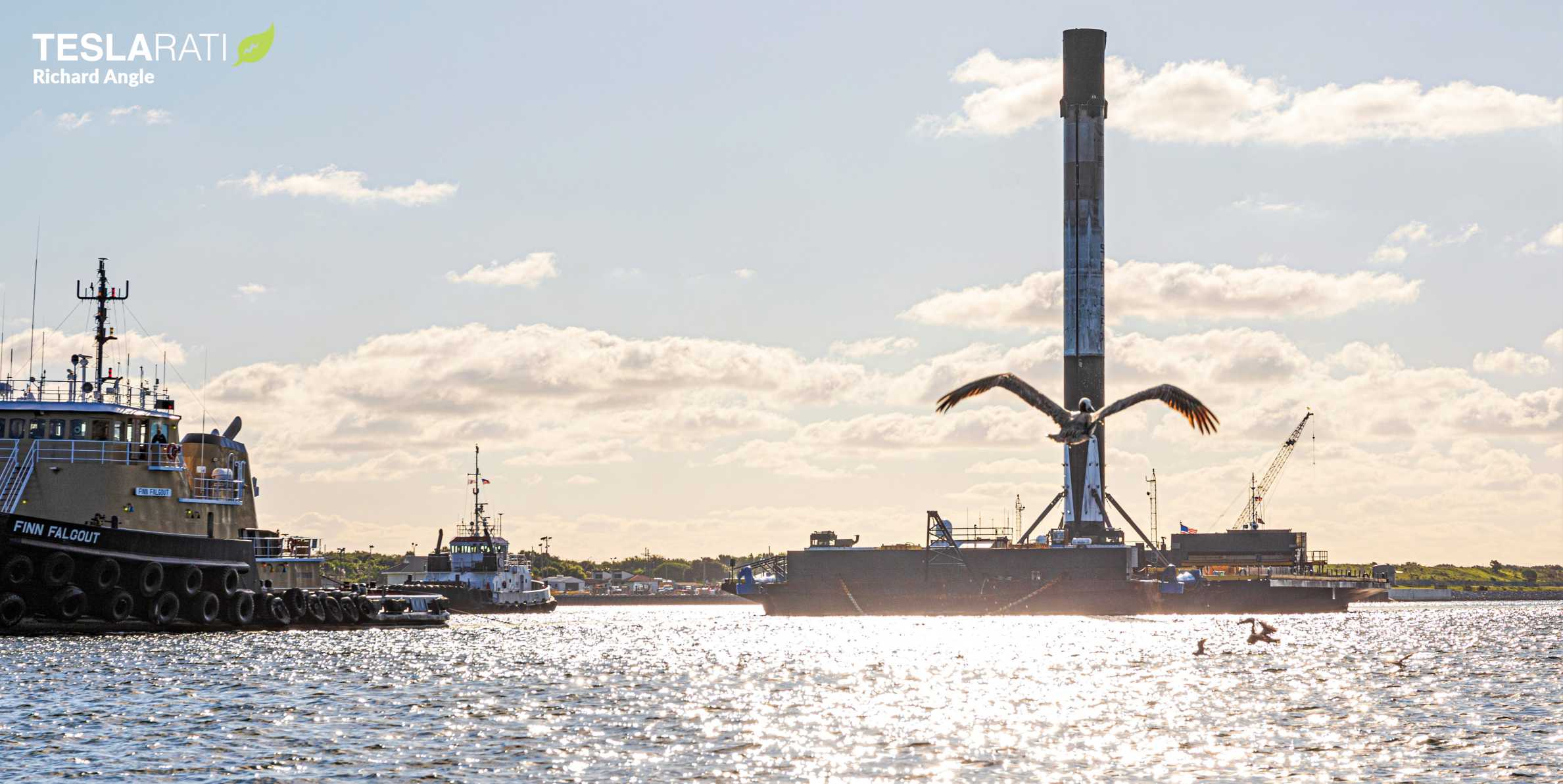
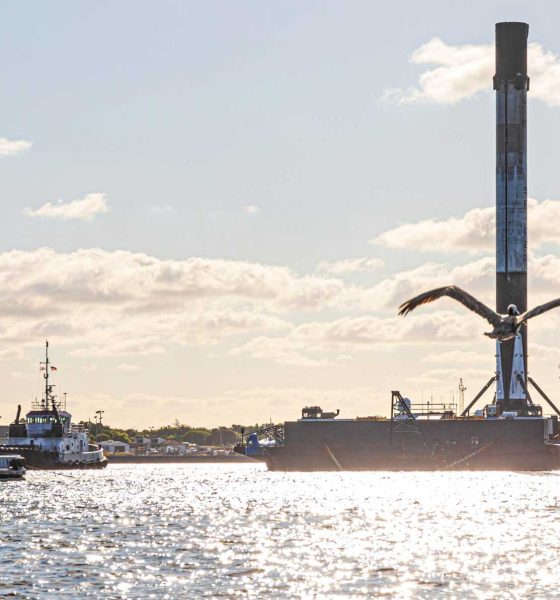
News
SpaceX’s rocket reusability dream is within reach after fastest recovery yet
SpaceX and CEO Elon Musk’s rocket reusability dream appears to be within reach for the first time ever after technicians managed to retract the most recently-launched Falcon 9 booster’s landing legs and bring it horizontal in record time.
On the heels of a SpaceX’s second orbital-class Falcon 9 launch, landing, and recovery just this month, the recovery milestone could mean that booster B1059 is being prepared for the fastest turnaround in the company’s history. Together, with two Starlink launches now complete less than two weeks into June 2020 and a third internet satellite mission scheduled as early as June 22nd, the odds are better than ever that SpaceX will be able to pull off a record launch cadence heading into the second half of the year.
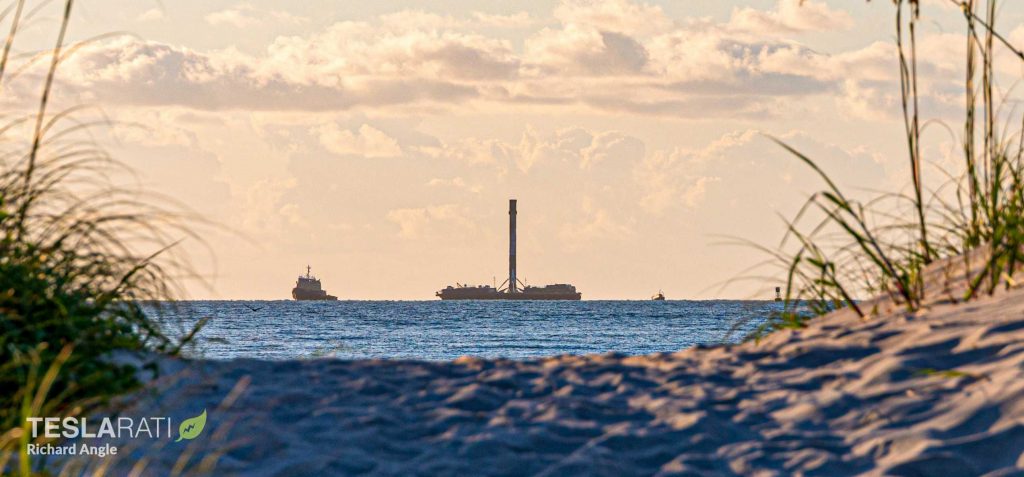
Averaged out, a sustained frequency of one launch every ~7 days would give SpaceX the ability to perform more than 50 orbital launches annually. In fact, just earlier this year, an environmental impact assessment completed for upgrades at Kennedy Space Center (KSC) Pad 39A revealed plans for as many as 70 annual launches from SpaceX’s two Florida pads by 2023.
Technically, SpaceX has already demonstrated that those two Florida launch pads – KSC Pad 39A and Cape Canaveral Air Force Station (CCAFS) LC-40 – are able to support 60-70 annual launches when pushed to their limits, with the latter pad recently performing two launches in just nine days for a potential maximum of 40 launches in one year. If SpaceX can pull off four Falcon 9 launches in 27 days, as it’s currently scheduled to do, the company will have already come a majority (75%) of the way to demonstrating that its fleet of Falcon rockets is also up to the task.
Currently the newest flown booster in SpaceX’s Falcon 9 fleet, the company has also wasted no time processing B1059 after ~8 am EDT return to Port Canaveral, kicking off landing leg retraction scarcely eight hours after berthing. B1059’s first sea recovery was also the second use of drone ship Of Course I Still Love You’s (OCISLY) upgraded Octagrabber, a tank-like robot used to keep technicians safe while remotely securing Falcon boosters on the high seas.
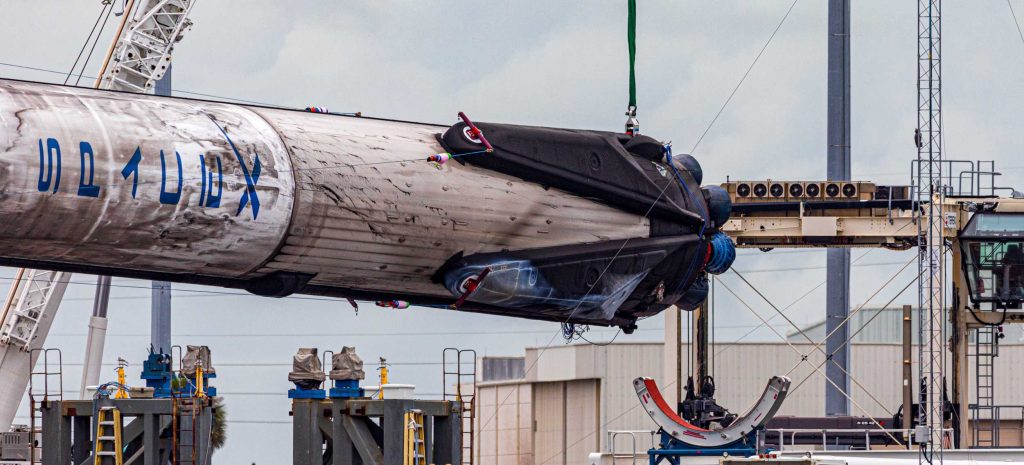
Octagrabber 2.0
By all appearances, SpaceX is using a new recovery method debuted with Falcon 9 booster B1058 earlier this month for the second time. With that significant operational tweak, the company no longer has to crane Falcon 9 boosters off of the drone ship before it can begin landing leg retraction – itself a process that’s barely a year old. By entirely supporting a booster with an upgraded Octagrabber robot and retracting its legs in situ, SpaceX can completely skip a recovery processing step, only lifting the rocket once it’s ready to be broken over (brought horizontal) and loaded onto a transporter.
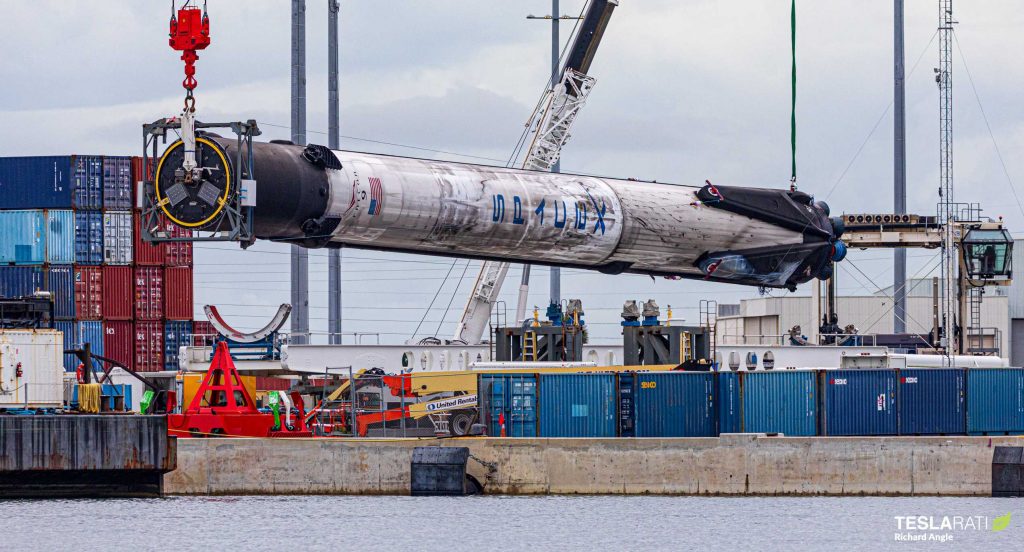
Unsurprisingly, on its first use, the improved efficiency allowed SpaceX to process a booster faster than any before it, breaking the previous record of ~1.9 days from port arrival to departure on a horizontal transporter. Now, B1059 is already on pace to beat B1058’s weeks-old recovery turnaround record. Extra-efficient recovery processing and the unprecedentedly rapid booster reuse it could soon enable will be crucial if SpaceX hopes to sustain a cadence of 3-6 Falcon 9 launches per month over the next few years.
Such a cadence is a necessity for the expedient deployment of the 12,000 to 40,000-satellite Starlink internet constellation. With SpaceX all but guaranteed to demonstrate three Starlink launches in a single month (in fact, less than three weeks), the company is making rapid progress in the right direction.
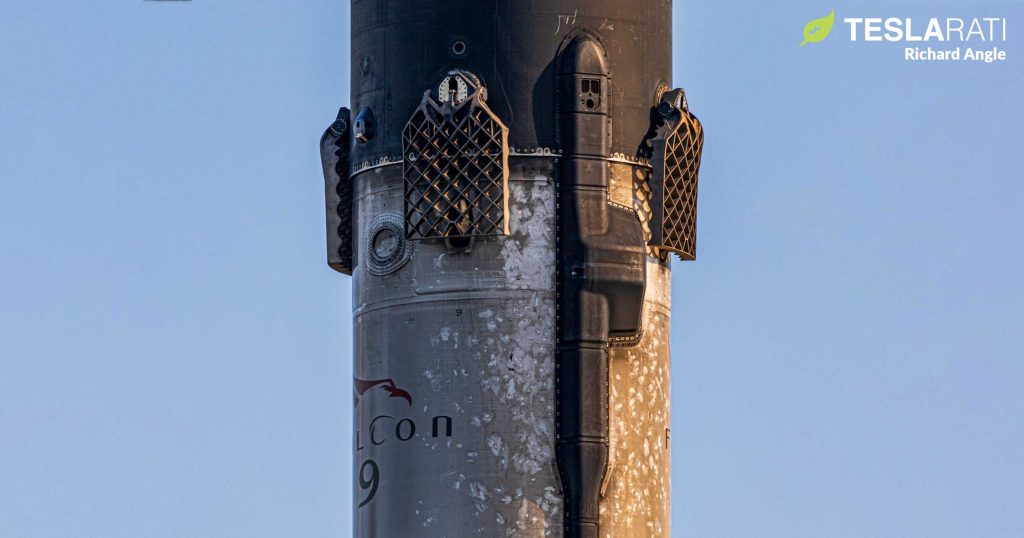
Speeding through recovery
In fact, as of writing, Falcon 9 B1059 has already had all four landing legs retracted and was lifted off drone ship OCISLY, broken over, and placed on SpaceX’s custom booster transporter less than 10 hours after it arrived in port. A step further, SpaceX took an incredible 8-9 hours after docking to bring the booster horizontal, crushing the previous record – ~27 hours – by a factor of three or more.
Given that unprecedented expediency, it wouldn’t be crazy to imagine that SpaceX could be aiming for a record-breaking booster turnaround on one of its next few Starlink launches, scheduled June 22nd and sometime in July. Held by the late booster B1056, SpaceX’s current turnaround record (the time between two launches) is 62 days, while the company and CEO Elon Musk’s ultimate reusability goal is to fly the same booster twice in just 24 hours.
Drone ship recoveries, of course, will almost always require at least a few extra days to travel back to port. Still, the fact that 99% of the processing needed to transport a booster can now be finished in as few as ~8 hours is the first unequivocal proof that a 24-hour turnaround is within SpaceX’s reach – so long as the rocket lands on land or the time in transit is excluded.
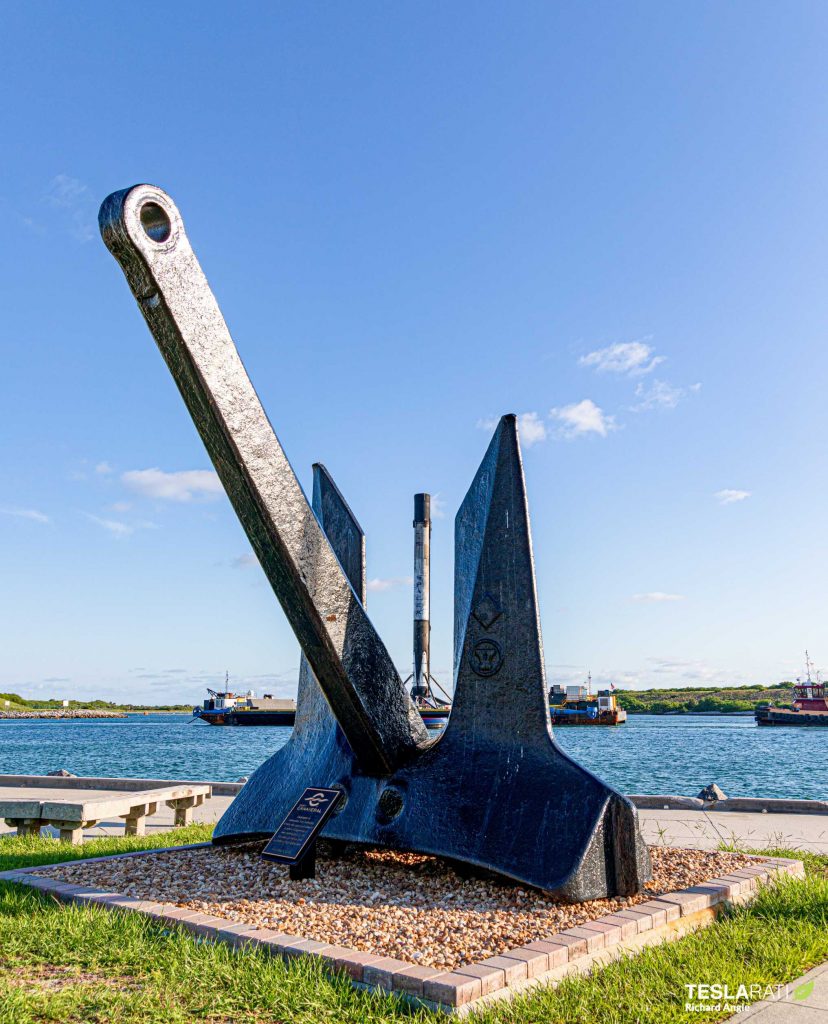
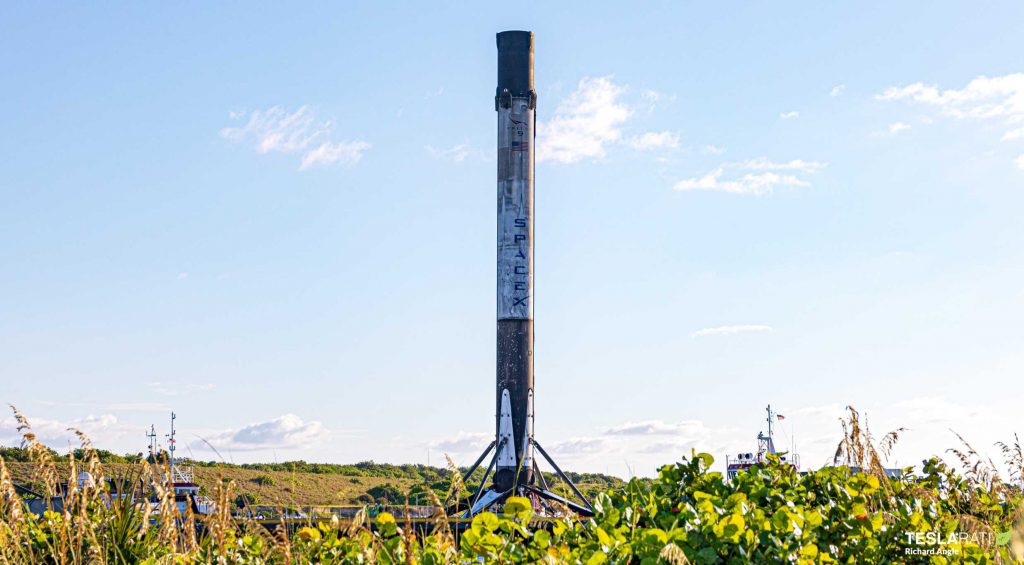
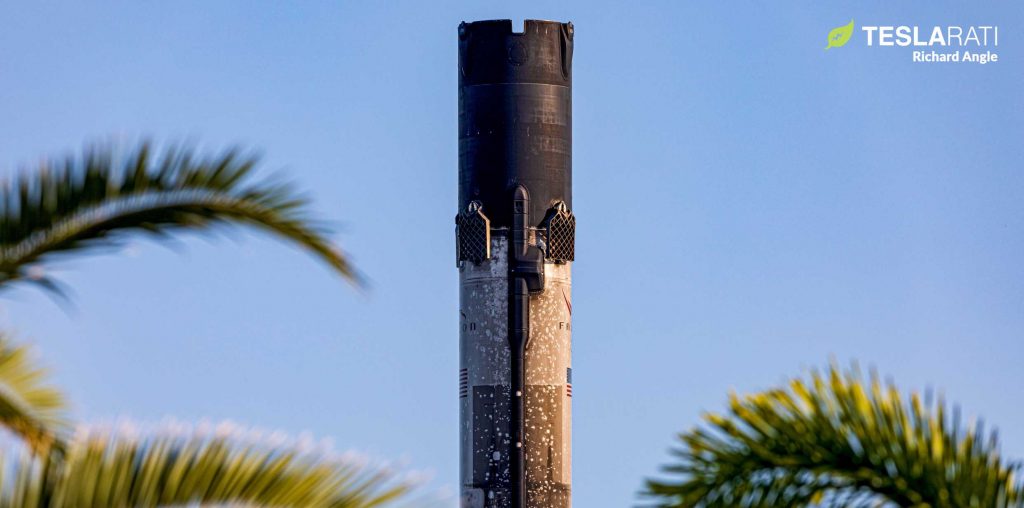
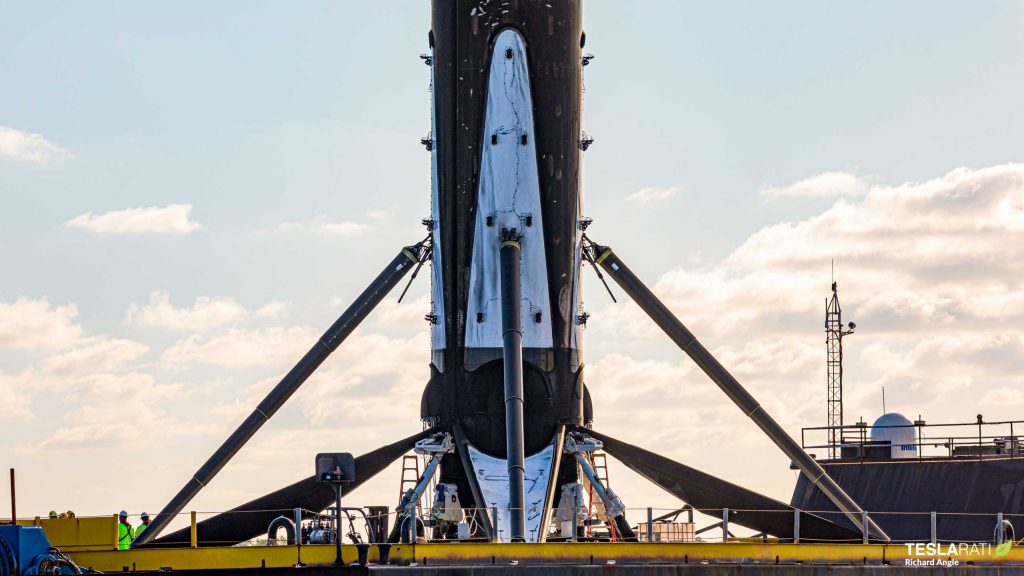
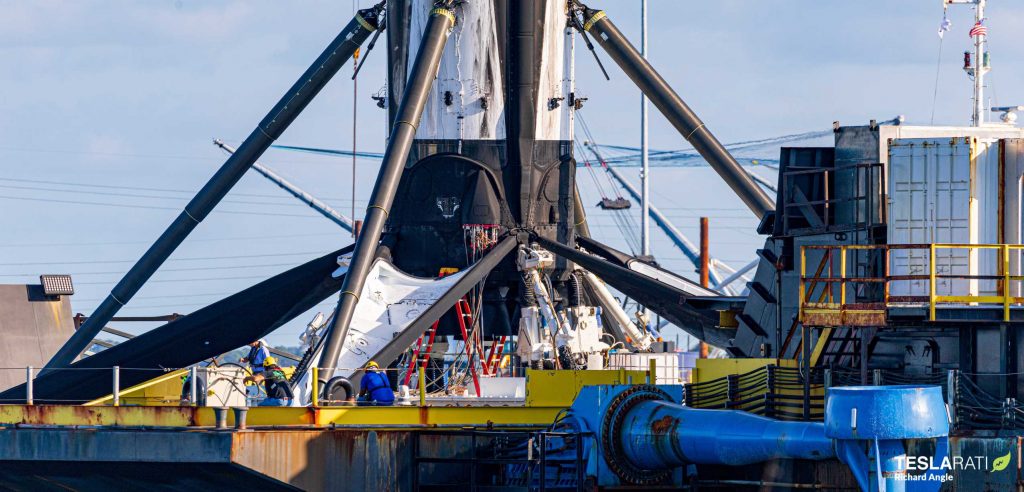
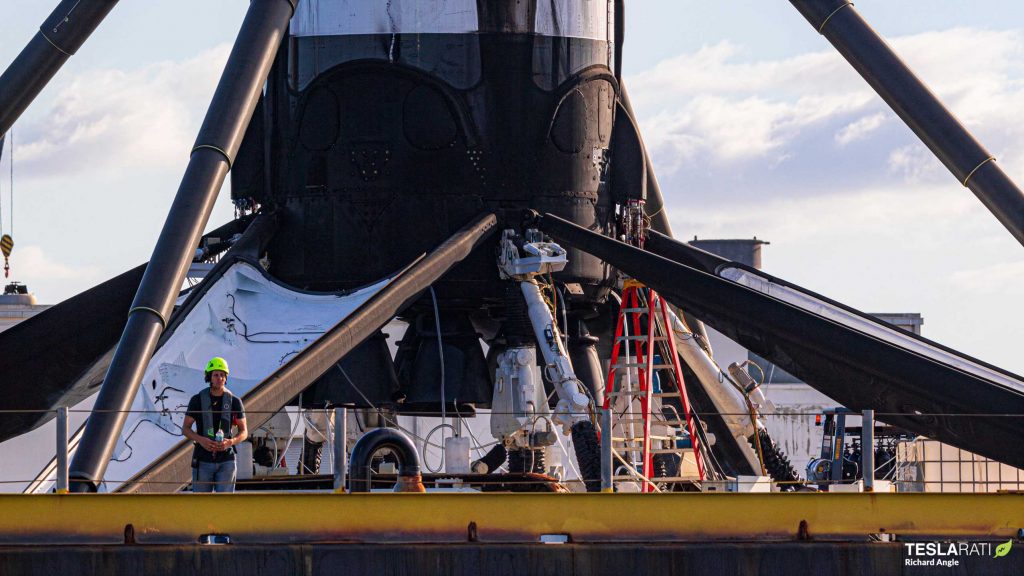
Check out Teslarati’s Marketplace! We offer Tesla accessories, including for the Tesla Cybertruck and Tesla Model 3.

News
Tesla Semi program Director teases major improvements
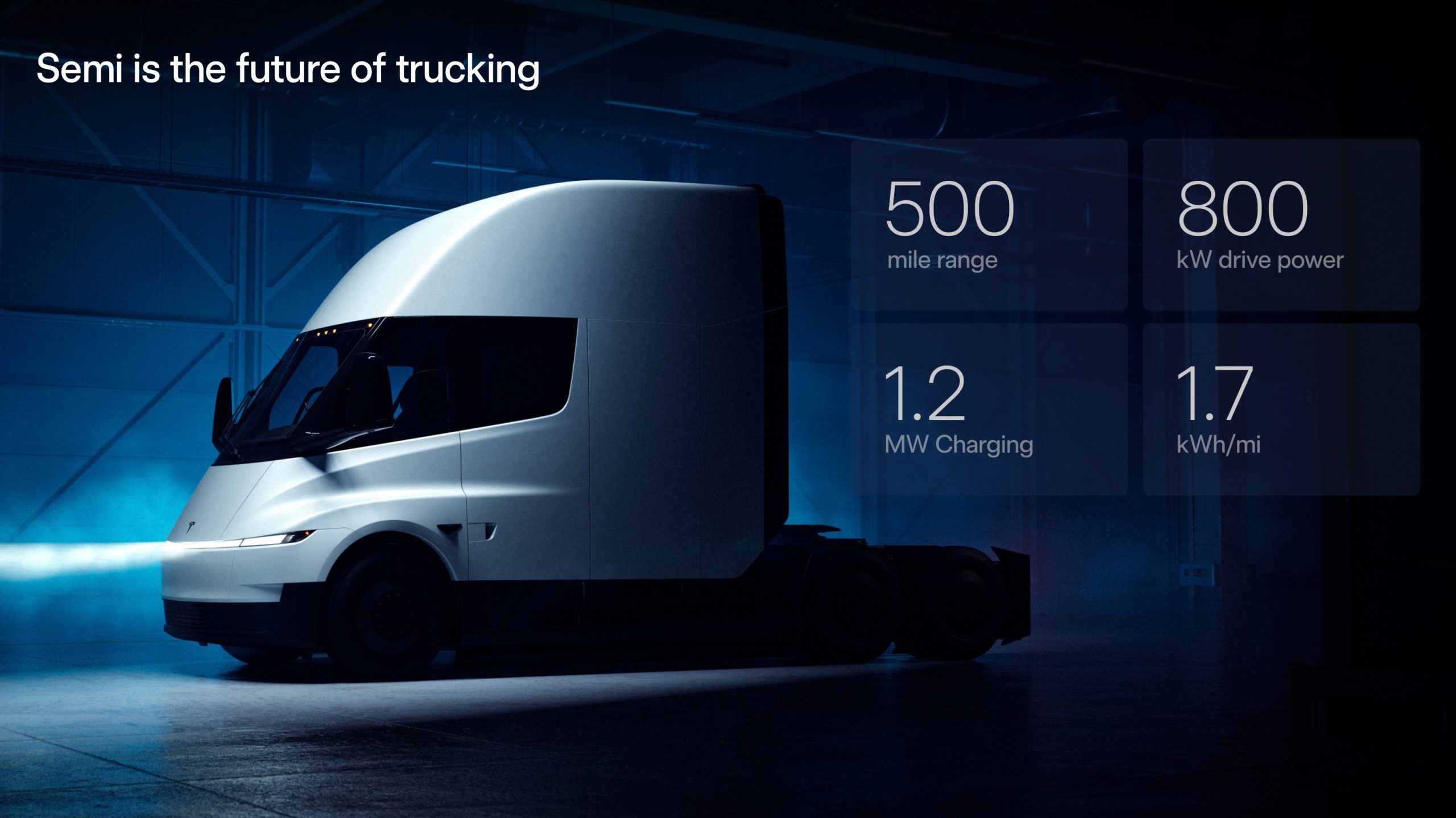
Tesla Semi Program Director Dan Priestly teased the major improvements to the all-electric Class 8 truck on Thursday night, following the company’s decision to overhaul the design earlier this year.
Priestley said he drove the Semi on Thursday, and the improvements appear to be welcomed by one of the minds behind the project. “Our customers are going to love it,” he concluded.
Just drove the redesigned Semi. Our customers are going to love it. https://t.co/KZ88sf1CDL
— Dan Priestley (@danWpriestley) December 19, 2025
The small detail does not seem like much, but it is coming from someone who has been involved in the development of the truck from A to Z. Priestley has been involved in the Semi program since November 2015 and has slowly worked his way through the ranks, and currently stands as the Director of the program.
Tesla Semi undergoes major redesign as dedicated factory preps for deliveries
Tesla made some major changes to the Semi design as it announced at the 2025 Annual Shareholder Meeting that it changed the look and design to welcome improvements in efficiency.
Initially, Tesla adopted the blade-like light bar for the Semi, similar to the one that is present on the Model Y Premium and the Cybertruck.
Additionally, there are some slight aesthetic changes to help with efficiency, including a redesigned bumper with improved aero channels, a smaller wraparound windshield, and a smoother roofline for better aero performance.
All of these changes came as the company’s Semi Factory, which is located on Gigafactory Nevada’s property, was finishing up construction in preparation for initial production phases, as Tesla is planning to ramp up manufacturing next year. CEO Elon Musk has said the Semi has attracted “ridiculous demand.”
The Semi has already gathered many large companies that have signed up to buy units, including Frito-Lay and PepsiCo., which have been helping Tesla test the vehicle in a pilot program to test range, efficiency, and other important metrics that will be a major selling point.
Tesla will be the Semi’s first user, though, and the truck will help solve some of the company’s logistics needs in the coming years.
News
Tesla dominates in the UK with Model Y and Model 3 leading the way

Tesla is dominating in the United Kingdom so far through 2025, and with about two weeks left in the year, the Model Y and Model 3 are leading the way.
The Model Y and Model 3 are the two best-selling electric vehicles in the United Kingdom, which is comprised of England, Scotland, Wales, and Northern Ireland, and it’s not particularly close.
According to data gathered by EU-EVs, the Model Y is sitting at 18,890 units for the year, while the Model 3 is slightly behind with 16,361 sales for the year so far.
The next best-selling EV is the Audi Q4 e-tron at 10,287 units, lagging significantly behind but ahead of other models like the BMW i4 and the Audi Q6 e-tron.
GOOD NEWS 🇬🇧 Tesla is absolutely crushing the UK electric vehicle market in 2025 💥
The numbers are in, and the dominance is clear. With an impressive amount of 42,270 vehicles delivered year-to-date, the brand now commands a solid 9.6% market share of the total auto market 🆒… pic.twitter.com/dkiGX9kzd0
— Ming (@tslaming) December 18, 2025
The Model Y has tasted significant success in the global market, but it has dominated in large markets like Europe and the United States.
For years, it’s been a car that has fit the bill of exactly what consumers need: a perfect combination of luxury, space, and sustainability.
Both vehicles are going to see decreases in sales compared to 2024; the Model Y was the best-selling car last year, but it sold 32,610 units in the UK. Meanwhile, the Model 3 had reached 17,272 units, which will keep it right on par with last year.
Tesla sold 50,090 units in the market last year, and it’s about 8,000 units shy of last year’s pace. It also had a stronger market share last year with 13.2 percent of the sales in the market. With two weeks left in 2025, Tesla has a 9.6 percent market share, leading Volkswagen with 8 percent.
The company likely felt some impact from CEO Elon Musk’s involvement with the Trump administration and, more specifically, his role with DOGE. However, it is worth mentioning that some months saw stronger consumer demand than others. For example, sales were up over 20 percent in February. A 14 percent increase followed this in June.
News
Tesla Insurance officially expands to new U.S. state
Tesla’s in-house Insurance program first launched back in late 2019, offering a new way to insure the vehicles that was potentially less expensive and could alleviate a lot of the issues people had with claims, as the company could assess and repair the damage itself.
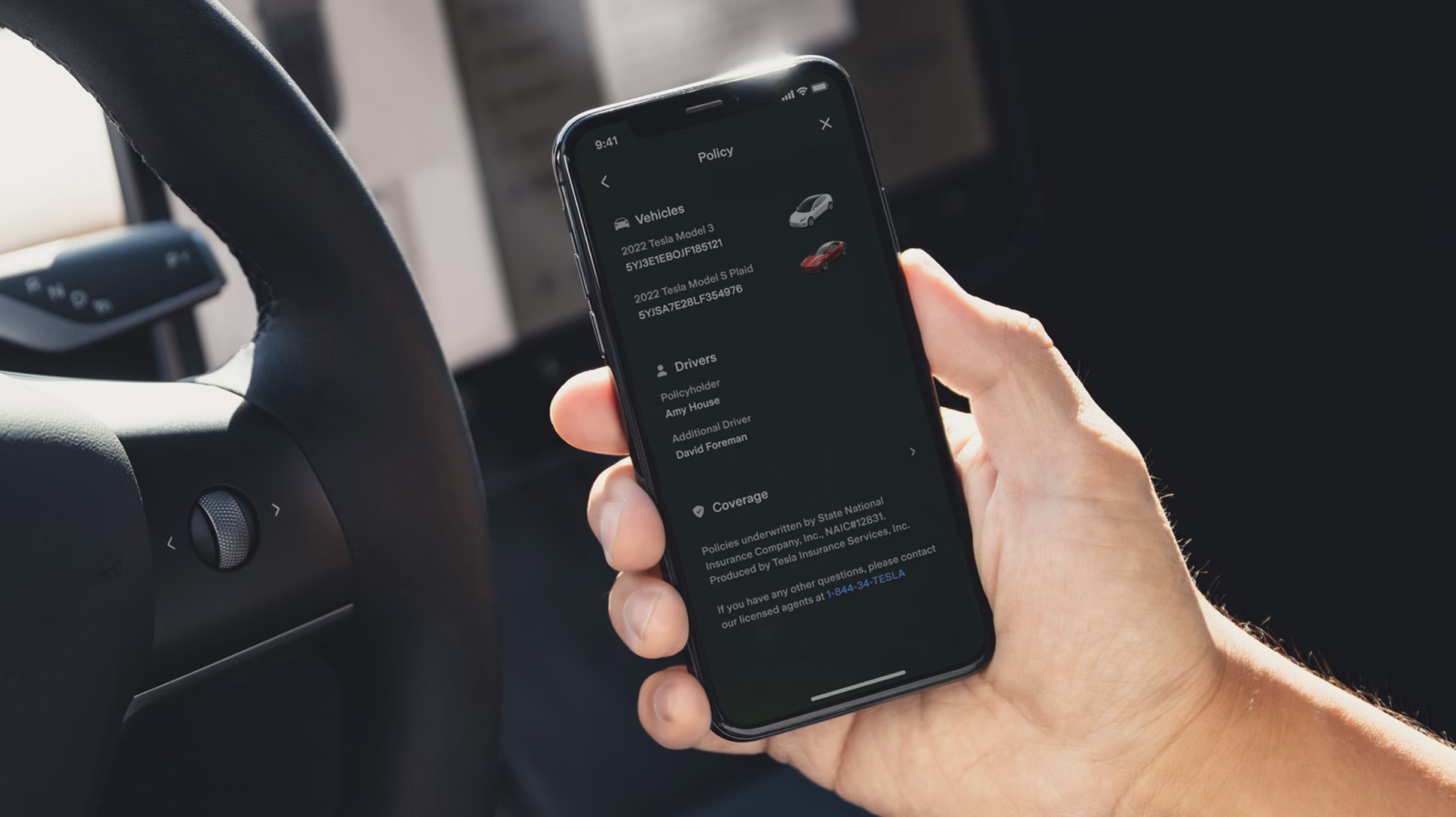
Tesla Insurance has officially expanded to a new U.S. state, its thirteenth since its launch in 2019.
Tesla has confirmed that its in-house Insurance program has officially made its way to Florida, just two months after the company filed to update its Private Passenger Auto program in the state. It had tried to offer its insurance program to drivers in the state back in 2022, but its launch did not happen.
Instead, Tesla refiled the paperwork back in mid-October, which essentially was the move toward initiating the offering this month.
BREAKING: Tesla Insurance has just officially launched in Florida.
This is the first new state to receive @Tesla Insurance in more than 3 years. In total, Tesla insurance is now available in 13 U.S. states (map in thread below of all the states).
Tesla Insurance in Florida uses… pic.twitter.com/bDwh1IV6gD
— Sawyer Merritt (@SawyerMerritt) December 17, 2025
Tesla’s in-house Insurance program first launched back in late 2019, offering a new way to insure the vehicles that was potentially less expensive and could alleviate a lot of the issues people had with claims, as the company could assess and repair the damage itself.
It has expanded to new states since 2019, but Florida presents a particularly interesting challenge for Tesla, as the company’s entry into the state is particularly noteworthy given its unique insurance landscape, characterized by high premiums due to frequent natural disasters, dense traffic, and a no-fault system.
Annual average premiums for Florida drivers hover around $4,000 per year, well above the national average. Tesla’s insurance program could disrupt this, especially for EV enthusiasts. The state’s growing EV adoption, fueled by incentives and infrastructure development, aligns perfectly with Tesla’s ecosystem.
Moreover, there are more ways to have cars repaired, and features like comprehensive coverage for battery damage and roadside assistance tailored to EVs address those common painpoints that owners have.
However, there are some challenges that still remain. Florida’s susceptibility to hurricanes raises questions about how Tesla will handle claims during disasters.
Looking ahead, Tesla’s expansion of its insurance program signals the company’s ambition to continue vertically integrating its services, including coverage of its vehicles. Reducing dependency on third-party insurers only makes things simpler for the company’s automotive division, as well as for its customers.








